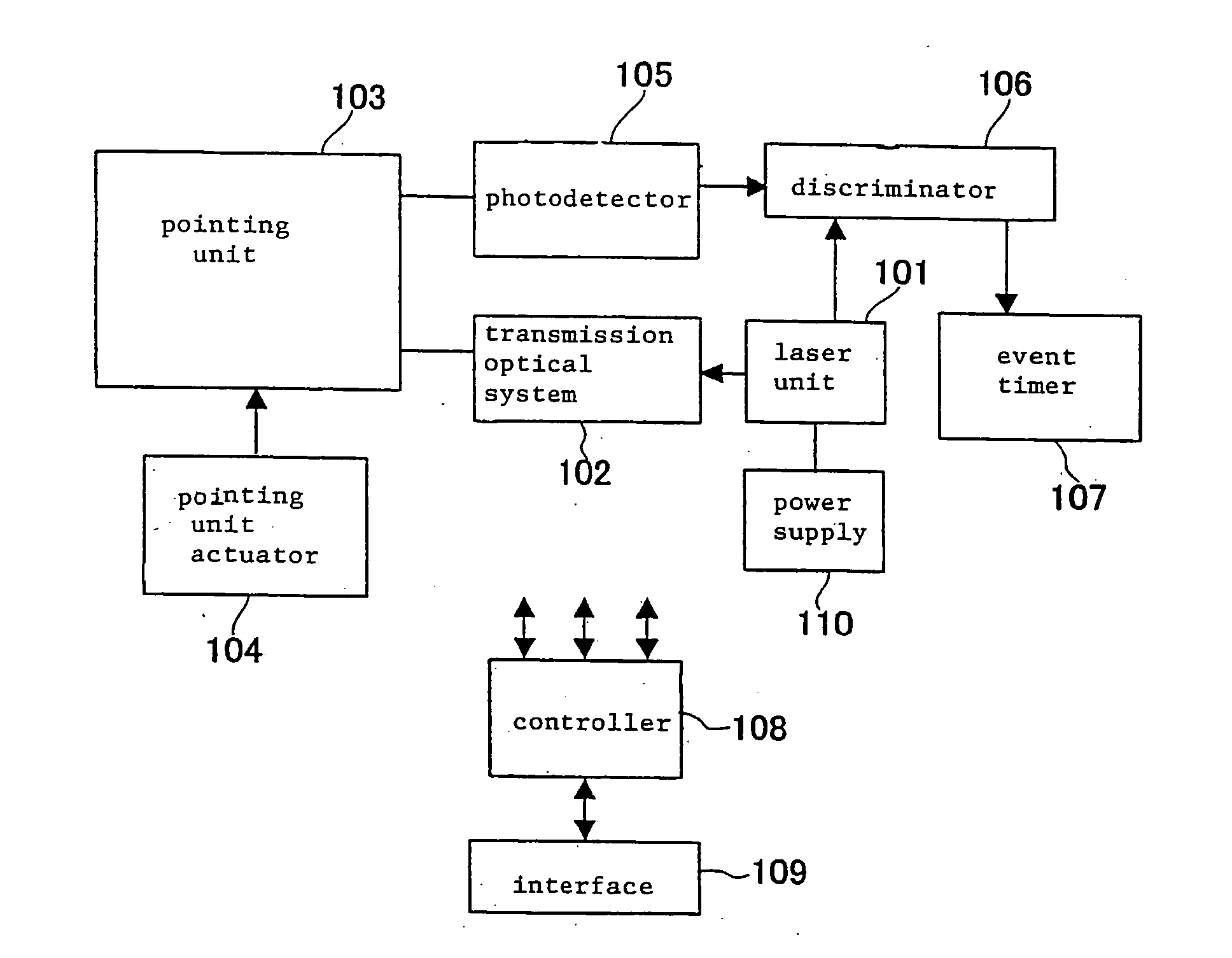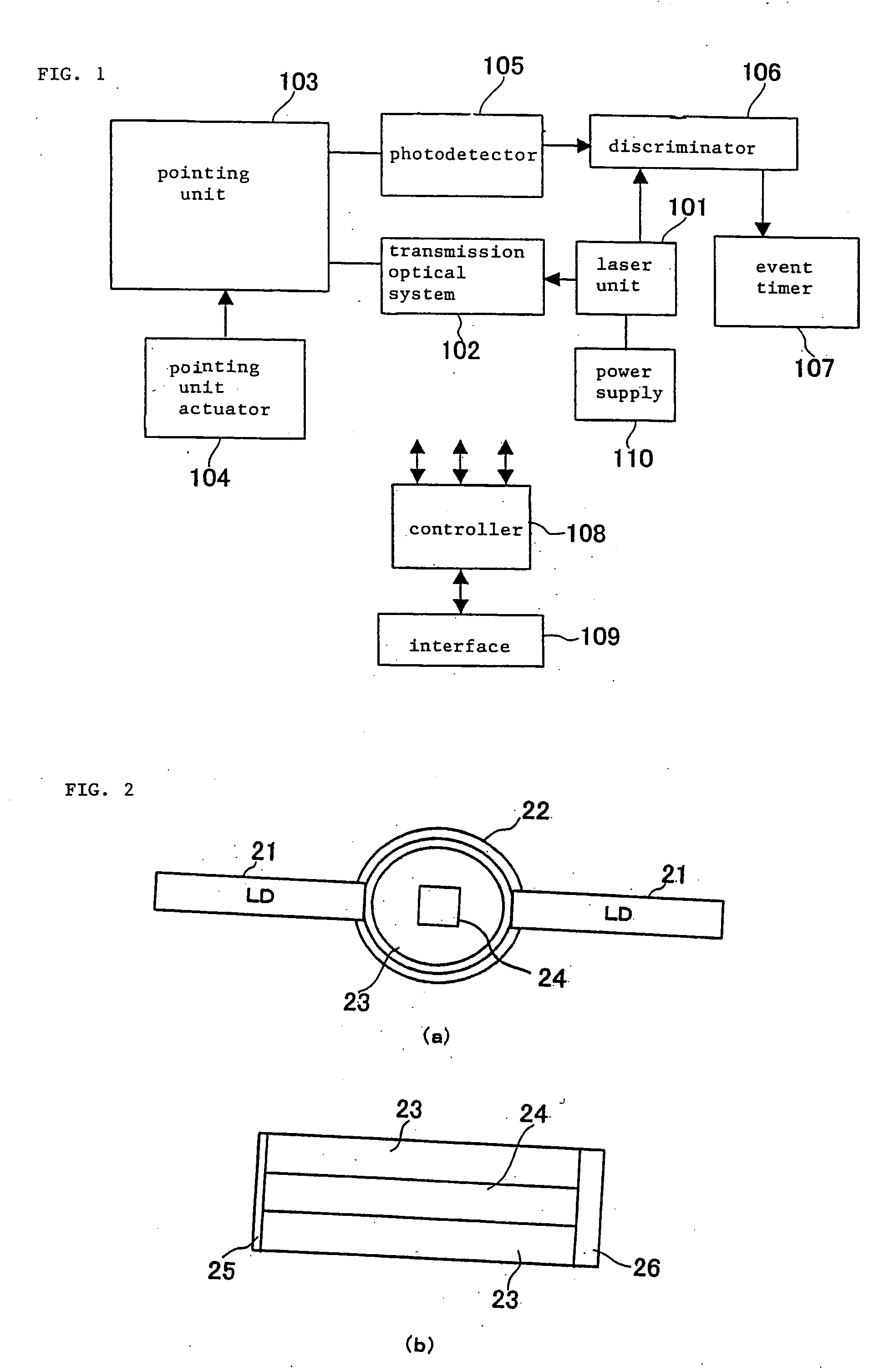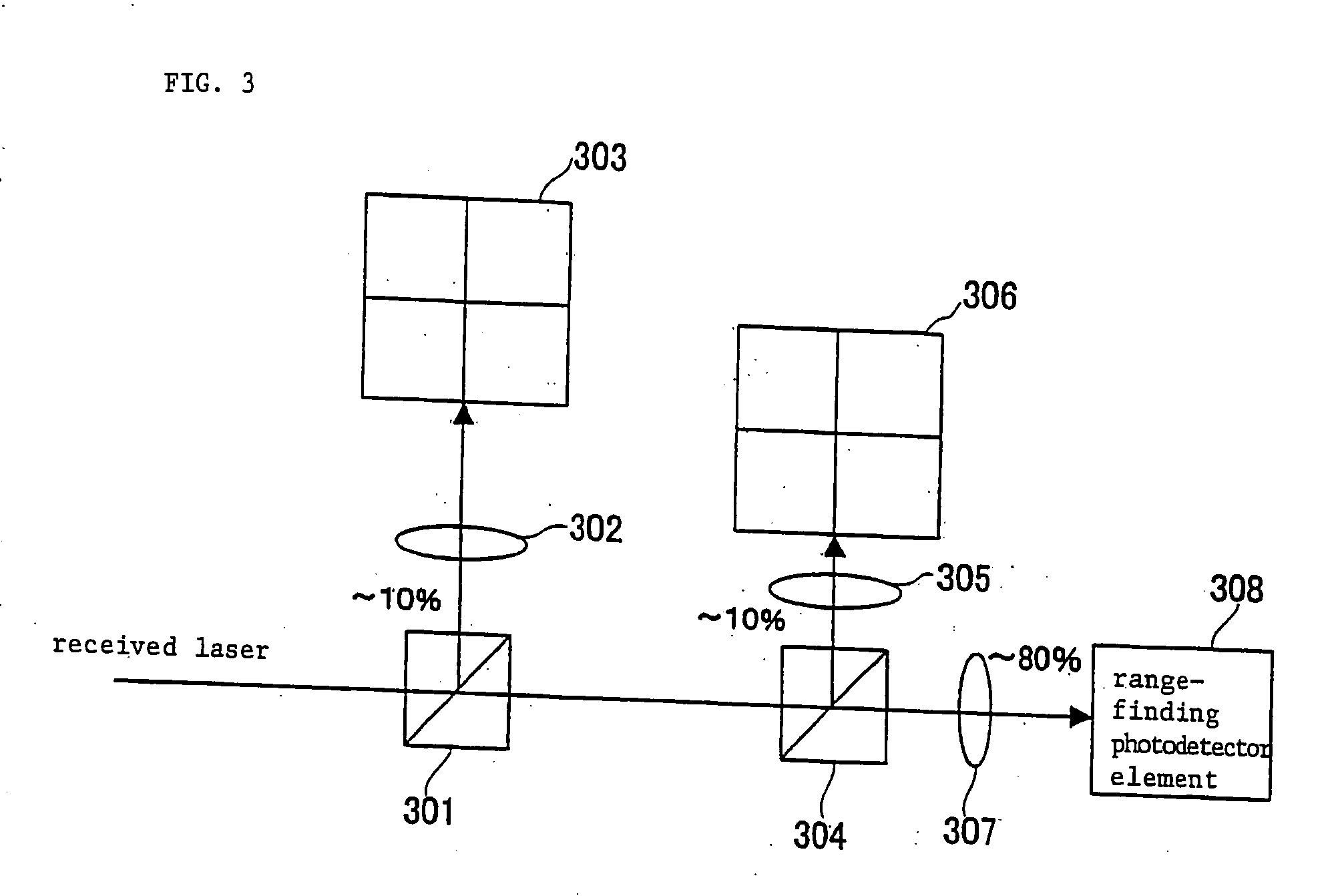Laser range finder
a laser range finder and laser range technology, applied in the direction of conveyors, distance measurement, instruments, etc., can solve the problems of large positional error, inability to meet satellite inter-satellite ranging, and inability to meet satellite ranging needs, etc., to achieve the effect of accurately measuring the inter-satellite rang
- Summary
- Abstract
- Description
- Claims
- Application Information
AI Technical Summary
Benefits of technology
Problems solved by technology
Method used
Image
Examples
Embodiment Construction
[0021]FIG. 1 shows in block form a laser range finder according to an embodiment of the present invention. As shown in FIG. 1, the laser range finder comprises laser unit 101, transmission optical system 102, pointing unit 103, pointing unit actuator 104, photodetector 105, discriminator 106, event timer 107, controller 108, interface 109, and power supply 110.
[0022] Laser unit 101 comprises a monolithic laser oscillator for emitting a short-pulse laser beam. The monolithic laser oscillator is a passive Q switch employing, as a saturable absorber, a Cr4+-doped YAG (Yttrium Aluminum Garnet) (Cr4+:YAG) crystal.
[0023] FIGS. 2(a) and 2(b) show structural details of the monolithic laser oscillator. As shown in FIGS. 2(a) and 2(b), the monolithic laser oscillator has non-doped YAG 23 disposed in light collection tube 22 having an inner layer of BaSO4, and Nd YAG crystal 24 as a laser medium disposed in non-doped YAG 23. Nd YAG crystal 24 has a size of 3″×10 mm.
[0024] One end 25 of ligh...
PUM
 Login to View More
Login to View More Abstract
Description
Claims
Application Information
 Login to View More
Login to View More - R&D
- Intellectual Property
- Life Sciences
- Materials
- Tech Scout
- Unparalleled Data Quality
- Higher Quality Content
- 60% Fewer Hallucinations
Browse by: Latest US Patents, China's latest patents, Technical Efficacy Thesaurus, Application Domain, Technology Topic, Popular Technical Reports.
© 2025 PatSnap. All rights reserved.Legal|Privacy policy|Modern Slavery Act Transparency Statement|Sitemap|About US| Contact US: help@patsnap.com



